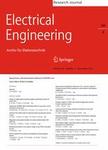版权所有:内蒙古大学图书馆 技术提供:维普资讯• 智图
内蒙古自治区呼和浩特市赛罕区大学西街235号 邮编: 010021

作者机构:Department of Electronics and Communication Engineering Indian Institute of Information Technology Design and Manufacturing Tamil Nadu Kancheepuram Chennai600127 India Department of Mechanical Engineering Indian Institute of Information Technology Design and Manufacturing Tamil Nadu Kancheepuram Chennai600127 India
出 版 物:《Electrical Engineering》 (Electr Eng)
年 卷 期:2025年第107卷第6期
页 面:7793-7813页
核心收录:
学科分类:0810[工学-信息与通信工程] 0808[工学-电气工程] 08[工学] 0807[工学-动力工程及工程热物理] 0835[工学-软件工程] 0714[理学-统计学(可授理学、经济学学位)] 0701[理学-数学] 0812[工学-计算机科学与技术(可授工学、理学学位)]
主 题:Energy utilization
摘 要:In this paper, a Jaya-optimized feed forward neural network (FFNN) is used to model the brushless DC (BLDC) motors in the quadcopter. Precise modeling of motor-propeller performance parameters for a given throttle input, including speed, thrust, current, torque, and power is necessary for estimating energy consumption and optimizing energy sources for various flying conditions. Accurate modeling is essential for performance analysis, but it is challenging due to the nonlinear relationships, environmental factors, and variability in propeller and motor characteristics. However, by integrating experimental data with simulation and analytical models, the prediction accuracy can be enhanced. While FFNNs are effective in capturing the complex nonlinear relationships between input and output variables, their performance is highly dependent on the optimization of network weights and biases. Traditional optimization methods often face challenges such as overfitting, computational inefficiency, and sensitivity to initial conditions. By leveraging the Jaya algorithm, which requires minimal control parameters and promotes adaptive convergence, the FFNN’s predictive accuracy is significantly improved. In this research, the performance of the model is studied and verified experimentally with two different throttle conditions, namely 1). linearly increasing and 2) full flight from takeoff to landing. The following performance parameters speed, thrust, current, torque, and power are predicted with an accuracy of 96.4%, 97.5%, 97.2%, 94.9%, and 96.8%, respectively, at maximum throttle positions with respect to traditional models. © The Author(s), under exclusive licence to Springer-Verlag GmbH Germany, part of Springer Nature 2025.